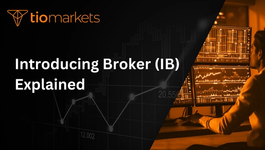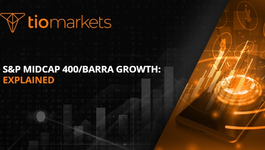KSE All Share Index: Explained
BY TIOmarkets
|July 29, 2024The KSE All Share Index is a comprehensive measure of the performance of all companies listed on the Karachi Stock Exchange. It is a critical tool for investors, analysts, and traders who are interested in the Pakistani market. This glossary article will delve into the intricacies of the KSE All Share Index, shedding light on its importance, calculation, and interpretation.
Understanding the KSE All Share Index is crucial for anyone involved in trading, as it provides a snapshot of the overall health of the Pakistani economy. By examining the index, traders can gain insights into market trends, identify potential investment opportunities, and make informed decisions.
History of the KSE All Share Index
The Karachi Stock Exchange, now known as the Pakistan Stock Exchange, was established in 1947. The KSE All Share Index was introduced much later, in 1991, to provide a more comprehensive view of the market's performance. The index includes all companies listed on the exchange, making it a more inclusive measure than the KSE-100, which only includes the top 100 companies.
Over the years, the KSE All Share Index has seen significant fluctuations, reflecting the ups and downs of the Pakistani economy. These movements have been influenced by a variety of factors, including political instability, economic reforms, and global market trends.
Significance of the KSE All Share Index
The KSE All Share Index is a crucial tool for traders and investors. It provides a broad view of the market's performance, allowing individuals to assess the overall health of the economy. By tracking the index, traders can identify trends and make informed decisions about when to buy or sell.
Moreover, the index serves as a benchmark for portfolio performance. Investors can compare their portfolio's performance against the index to determine if they are achieving their investment goals. If a portfolio is underperforming the index, it may indicate that the investor needs to reassess their strategy.
Calculation of the KSE All Share Index
The KSE All Share Index is calculated using a weighted average of the prices of all listed companies. The weight assigned to each company is determined by its market capitalization, which is the total market value of a company's outstanding shares of stock.
To calculate the index, the current market prices of all listed companies are multiplied by their respective weights. The results are then summed up and divided by the base value, which is a constant figure set by the exchange. The base value is adjusted periodically to account for changes in the market, such as the listing or delisting of companies.
Understanding the Calculation
The calculation of the KSE All Share Index may seem complex, but it's actually quite straightforward. The key is to understand the concept of market capitalization and how it affects the weight assigned to each company. A company with a larger market capitalization has a greater impact on the index than a company with a smaller market capitalization.
By using a weighted average, the index accurately reflects the performance of the market. If a large company's stock price increases, it will have a greater impact on the index than if a small company's stock price increases. This ensures that the index accurately represents the market's performance.
Interpreting the KSE All Share Index
Interpreting the KSE All Share Index requires an understanding of how stock indices work. A rising index indicates that the overall market is performing well, while a falling index suggests that the market is performing poorly. However, it's important to remember that the index is just a snapshot of the market at a particular point in time.
Traders should also consider other factors, such as economic indicators, political events, and global market trends, when interpreting the index. These factors can have a significant impact on the market's performance and can influence the direction of the index.
Using the Index in Trading
The KSE All Share Index can be a valuable tool for traders. By tracking the index, traders can identify market trends and make informed decisions about when to buy or sell. For example, if the index is rising, it may be a good time to buy. Conversely, if the index is falling, it may be a good time to sell.
However, it's important to remember that trading based solely on the index can be risky. The index is just one of many factors that traders should consider when making decisions. Other factors, such as a company's financial health, industry trends, and economic indicators, should also be taken into account.
Conclusion
The KSE All Share Index is a comprehensive measure of the performance of the Pakistani market. It provides valuable insights into market trends and serves as a benchmark for portfolio performance. By understanding how the index is calculated and interpreted, traders can make more informed decisions and potentially improve their trading outcomes.
However, it's important to remember that the index is just one tool in a trader's toolbox. Successful trading requires a holistic approach that considers a variety of factors, including economic indicators, company performance, and global market trends. By taking these factors into account, traders can develop a more robust and effective trading strategy.
Start Trading with TIOmarkets
Now that you're equipped with the knowledge of the KSE All Share Index, take the next step in your trading journey with TIOmarkets. As a top rated forex broker, we offer a seamless online trading platform where you can trade over 300 instruments across Forex, indices, stocks, commodities, and futures markets. Benefit from low fees and join a growing community of 170,000+ traders in over 170 countries. Enhance your skills with our educational resources and step-by-step guides. Ready to dive into the world of trading? Create a Trading Account today and start your success story with TIOmarkets.

Risk disclaimer: CFDs are complex instruments and come with a high risk of losing money rapidly due to leverage. You should consider whether you understand how CFDs work and whether you can afford to take the high risk of losing your money. Never deposit more than you are prepared to lose. Professional client’s losses can exceed their deposit. Please see our risk warning policy and seek independent professional advice if you do not fully understand. This information is not directed or intended for distribution to or use by residents of certain countries/jurisdictions including, but not limited to, USA & OFAC. The Company holds the right to alter the aforementioned list of countries at its own discretion.
Join us on social media

Behind every blog post lies the combined experience of the people working at TIOmarkets. We are a team of dedicated industry professionals and financial markets enthusiasts committed to providing you with trading education and financial markets commentary. Our goal is to help empower you with the knowledge you need to trade in the markets effectively.





